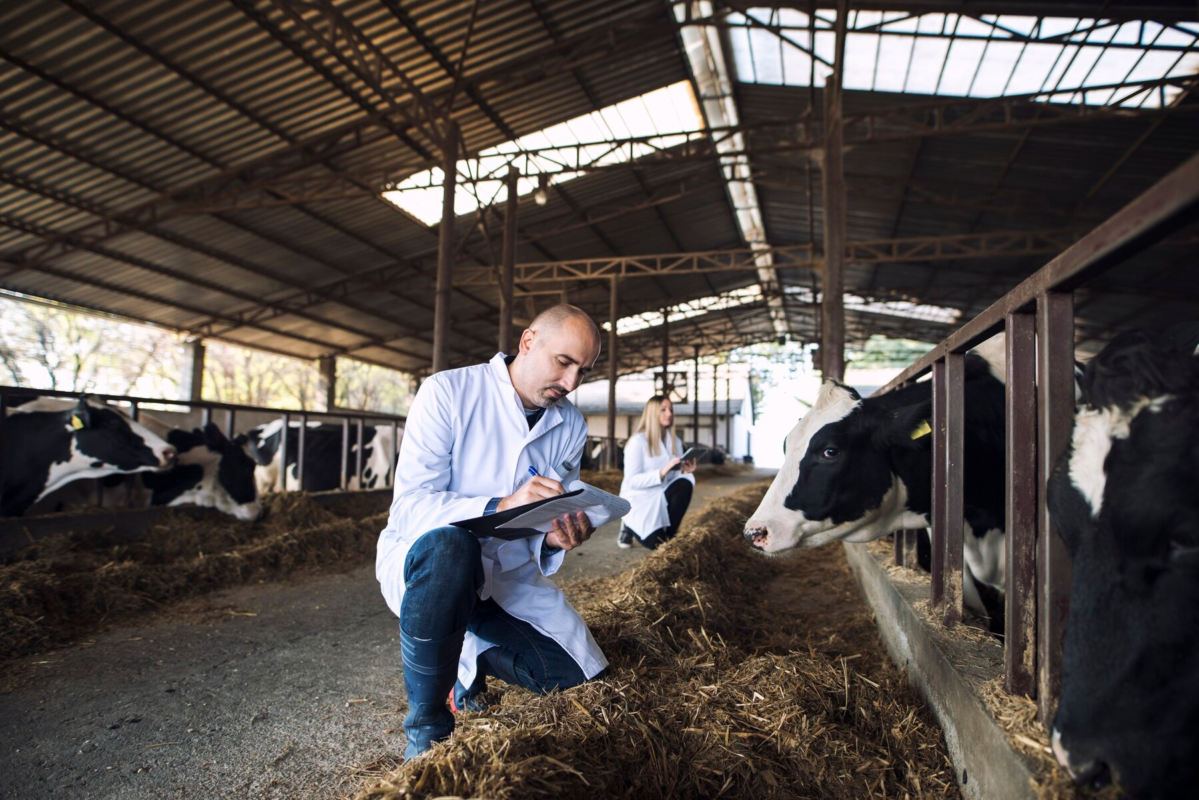USDA Tackles Bird Flu in Dairy with National Milk Testing Amid California Emergency.
3 Jan 2025, 08:00 a.m. PT
By Fernando García Covarrubias

The spread of avian flu (H5N1) in U.S. dairy cattle marks a pivotal moment for the industry, underscoring the complex balance between public health, food safety, and economic stability. To address this unprecedented challenge, on December 6, the U.S. Department of
Agriculture (USDA) rolled out a national milk testing strategy, an essential step to contain the outbreak and reassure consumers about the safety of dairy products [1]. While avian flu has historically impacted poultry, its spillover to dairy cattle (first detected in Texas in March 2024) has prompted nationwide concern. As of December 26, the outbreak has spread across 16 states, with 876 confirmed dairy herd cases. Also, 39 human cases have been confirmed associated with dairy cattle exhibiting minor symptoms and fully recovered without hospitalization [2]
While avian flu has long threatened poultry, its transmission to cattle raises new complexities. Research indicates cattle can contract the virus through indirect exposure via contaminated water, surfaces, or contact with migratory birds [3]. Once infected, cattle show symptoms such as fever, respiratory distress, reduced feed intake, and a significant decline in milk production [4].
H5N1 fragments have also been detected in milk, leading to initial public concerns about safety. This concern arose in April following the first virus detection in lactating dairy herds. However, rigorous studies by the FDA and USDA confirm that standard pasteurization effectively neutralizes the active traits of H5N1, ensuring milk and dairy products remain safe for human consumption [4].
The dairy industry faces two significant challenges: minimizing the virus´s impact on productivity and maintaining consumer confidence. Misunderstandings about food safety, such as concerns over pasteurized milk, can potentially disrupt markets. Similar fears during past avian flu outbreaks in poultry led to widespread consumer hesitation and economic losses, including $225 million in damages to U.S. turkey producers during the 2015 outbreak [3].
To address these risks, the USDA´s national milk testing strategy aims to ensure transparency, protect public trust, and provide much- needed support to producers during this critical time.


What Does the National Milk Testing Order Entail?

The USDA´s recent federal order mandates testing of milk from dairy cattle before interstate movement. This strategy has two main objectives:
1. Early Detection:
Nationwide milk testing will identify outbreaks at the earliest stages, enabling prompt containment and reducing the virus´s spread between herds.
2. Reassuring Consumers:
The strategy addresses concerns about H5N1 in the food supply chain by publicly affirming milk safety through transparent testing.
These efforts are complemented by USDA financial aid for dairy farmers, which includes compensation for milk production losses and funding for enhanced safety protocols [1]. Such measures are vital to stabilizing operations, as losses can escalate quickly. For instance,
according to an exploratory economic analysis, the temporary removal of an infected cow from the herd for 30 days may result in $483 in production losses. On larger farms where ten or more cows are affected, this figure can exceed $4,800, a significant strain on already
tight margins [4].

California Declares State of Emergency Amid Avian Flu Outbreak

On December 17, California declared a state of emergency as H5N1 continued to impact dairy herds nationwide, with 112 newly confirmed cases in December alone [1]. The emergency declaration provides critical resources for disease containment, enabling stricter
quarantine protocols and expanded testing efforts, especially in areas with high dairy operations [1] [5]. As mentioned, without aggressive intervention, the outbreak could inflict long-term economic damage on California's dairy industry, which accounts for 18% of U.S. milk production [1] [4]. Health officials also stressed the importance of early detection and reinforced biosecurity measures to curb the virus’s spread [1].


References
[1] McNeil Jr., D. G. (2024, December 6). USDA launches milk testing to combat bird flu indairy herds. The New York Times. Retrieved December 26, 2024, from
https://www.nytimes.com/2024/12/06/health/usda-bird-flu-milk-testing.html
[2] Centers for Disease Control and Prevention. (2024). Avian influenza: Current situation summary. Retrieved December 26, 2024, from https://www.cdc.gov/bird-flu/situation-summary/index.html#human-cases
[3] Wen, X., Sun, S., Li, L., He, Q., & Tsai, F. S. (2019). Avian influenza—Factors affecting consumers’ purchase intentions toward poultry products. International journal of environmental research and public health, 16(21), 4139.
[4] Garcia-Covarrubias, L., Peña-Lévano, L., Pinto, A., & Pereira, R. (2024) The Unexpected Battle Against Avian Flu in U.S. Dairy. Target Journal: Choices, USA. Forthcoming
[5] U.S. Department of Agriculture. (2024). Agriculture Secretary Vilsack and California First Partner Jennifer Siebel Newsom highlight California’s innovation in agriculture. Retrieved December 26, 2024, from https://www.usda.gov/article/agriculture-secretary-vilsack-california-first-partner-jennifer-siebel-newsom-highlight-california


